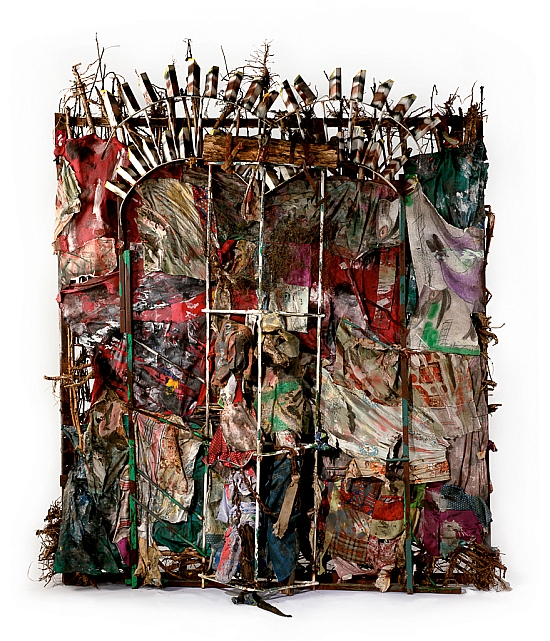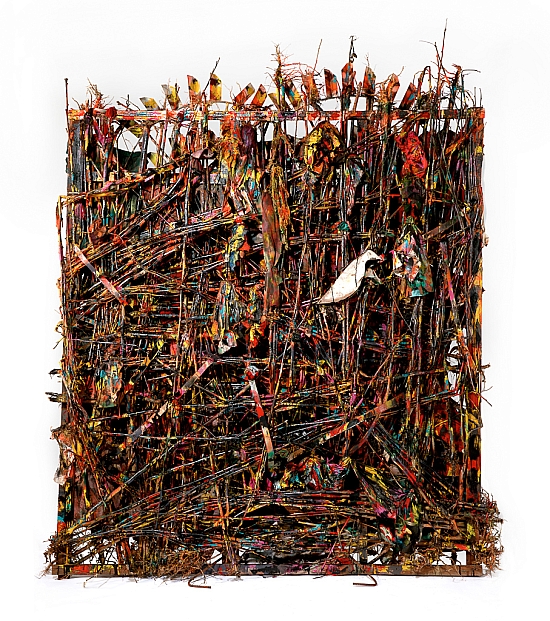History Refused to Die is a good second act to Peckerwood City’s nightmare of assimilation. Dial takes the stuff of homegrown black art—scraps of quilts, torn-up watercolor drawings he made but never released, and paint-wipe rags from his studio (all of these are made from cotton, as well)—to patch together a theatrical backdrop for an elderly black couple fashioned from found wood. On the reverse, tucked into a colorful thicket of okra stalks are two birds, one black, one white. This is an upside-down and utterly inverted world of a stubborn History that has refused its orders and stage directions. Roots grow toward the sky while the vegetable—slimy, and immortalized in Business on the Slippery Side—grows into the earth. It is the world that blues singer Bessie Smith once sang about, an imagined place free of the shackles of her America, a world where “all the birds sing bass.” The old black couple has finally won the starring roles (when was the last time such a couple were the protagonists of any popular entertainment?) on a set of their own cultural devising. It is impossible not to see these figures as Dial and his wife, Clara Mae. —Paul Arnett

